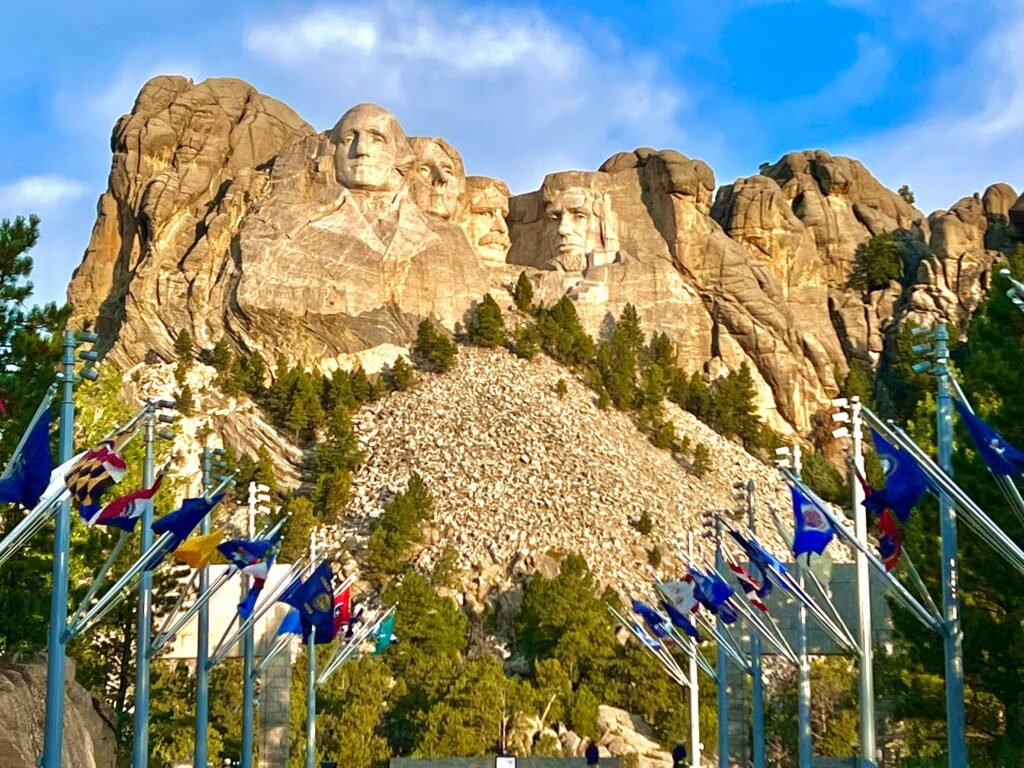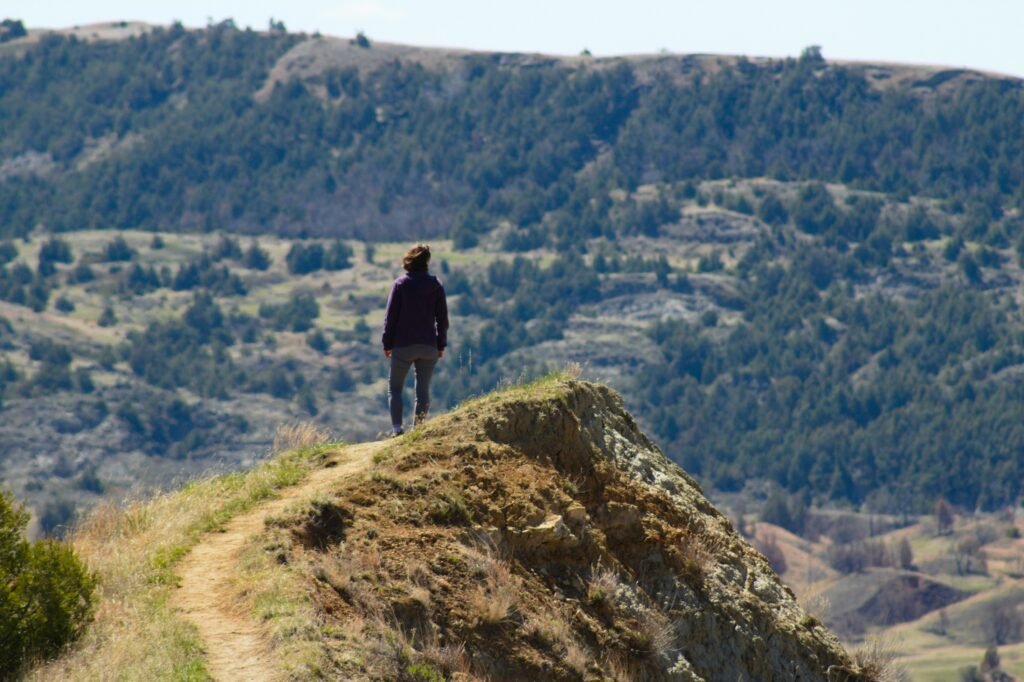Theodore Roosevelt National Park

Theodore Roosevelt National Park, located in the rugged badlands of North Dakota, is a hidden gem that offers a unique blend of stunning landscapes, rich wildlife, and historical significance. Named after the 26th President of the United States, who found solace and inspiration in this region, the park is a testament to the enduring spirit of conservation and natural beauty.
For travelers seeking an escape from the hustle and bustle of modern life, Theodore Roosevelt National Park provides an opportunity to immerse oneself in pristine wilderness and experience the raw beauty of the American West.
Why a Traveler Should Visit This Place
Theodore Roosevelt National Park is a destination that offers a unique blend of natural beauty, historical significance, and diverse outdoor activities, making it a must-visit for any traveler. Here’s why:
- Stunning Natural Landscapes
- Rich Wildlife.
- Historical Significance
- Varied Outdoor Recreations
- Seasonal Beauty
- Tranquility And Solitude
- Family Friendly
- Photography opportunity
Exploring The Seasonal Beauty

The beauty of Theodore Roosevelt National Park varies dramatically with the seasons, each offering a distinct and captivating experience:
Spring (March to May)
Spring breathes new life into the park, with blooming wildflowers and lush green meadows. The temperatures are mild, making it an ideal time for hiking and wildlife watching. Bison, elk, and prairie dogs are particularly active during this time, and birdwatchers will delight in the variety of migratory birds.
Summer (June to August)
Summer is the peak season for the park, with warm temperatures and long daylight hours perfect for exploration. The badlands’ rugged terrain is beautifully illuminated by the summer sun, and the park’s numerous trails and scenic drives are bustling with activity. However, be prepared for occasional thunderstorms and higher visitor numbers.
Fall (September to November)
Fall is a spectacular time to visit Theodore Roosevelt National Park. The cooler temperatures and changing foliage create a picturesque setting. The park’s landscape is painted in vibrant hues of red, orange, and yellow, providing a stunning backdrop for hiking and photography. Wildlife is also more visible as animals prepare for winter.
Winter (December to February)
Winter transforms the park into a serene, snow-covered wonderland. The badlands’ rugged formations take on a stark beauty against the snow, and the park is incredibly peaceful with fewer visitors. Winter activities include snowshoeing and cross-country skiing, and the park’s visitor centers remain open year-round.
Top Places You Must See

Theodore Roosevelt National Park is filled with must-see attractions that showcase its diverse landscapes and historical significance:
Painted Canyon Overlook
One of the park’s most iconic viewpoints, Painted Canyon Overlook offers a breathtaking panoramic view of the badlands. The overlook is accessible from Interstate 94 and provides a perfect introduction to the park’s rugged beauty.
Theodore Roosevelt’s Elkhorn Ranch Site
Visit the site of Theodore Roosevelt’s Elkhorn Ranch, where he lived and worked in the late 19th century. While only the foundations remain, the site offers a glimpse into Roosevelt’s life and his profound connection to the land.
Scenic Loop Drives
Both the South Unit and North Unit of the park feature scenic loop drives that offer stunning views of the badlands, prairie, and river valleys. These drives are dotted with numerous pullouts and overlooks, providing ample opportunities for photography and wildlife spotting.
Maltese Cross Cabin
Located near the South Unit Visitor Center, the Maltese Cross Cabin is one of the original buildings from Roosevelt’s ranching days. The cabin has been preserved and moved to its current location, offering insight into the early days of the park and Roosevelt’s legacy.
Oxbow Overlook
In the North Unit, Oxbow Overlook provides a dramatic view of the Little Missouri River’s meandering bends. This overlook is particularly stunning at sunrise and sunset, offering a tranquil and picturesque setting.
Outdoor Activities in Theodore Roosevelt National Park

The park offers a wide range of outdoor activities to suit all interests and skill levels:
Hiking:
With over 100 miles of trails, Theodore Roosevelt National Park is a hiker’s paradise. Popular trails include the Wind Canyon Trail, which offers stunning views of the Little Missouri River, and the Petrified Forest Loop, where you can see ancient petrified wood.
Wildlife Watching:
The park is home to a diverse array of wildlife, including bison, elk, pronghorn, and wild horses. The prairie dog towns are particularly popular, offering a unique opportunity to observe these charming creatures in their natural habitat.
Horseback Riding
For those who enjoy horseback riding, the park offers several equestrian trails. Riding through the badlands provides a unique and immersive way to experience the landscape, much like Theodore Roosevelt did over a century ago.
Camping:
The park has three campgrounds: Juniper Campground in the North Unit, Cottonwood Campground in the South Unit, and Roundup Group Horse Campground. Camping under the stars in the park’s serene environment is an unforgettable experience.
Canoeing and Kayaking
The Little Missouri River offers opportunities for canoeing and kayaking, providing a unique perspective of the park’s landscapes. Be sure to check water levels and conditions before embarking on a river adventure.
How to Get to Theodore Roosevelt National Park

Theodore Roosevelt National Park is located in western North Dakota and is accessible by car, air, and bus:
By Car
The park has two main entrances: the South Unit near Medora, off Interstate 94, and the North Unit near Watford City, off U.S. Highway 85. The scenic drives within the park are best explored by car, providing access to various viewpoints and trailheads.
By Air
The nearest airports are in Dickinson (45 miles east of the South Unit) and Bismarck (130 miles east). Both airports offer rental car services, making it easy to reach the park.
By Bus
Bus services are available to Dickinson and Bismarck, from where you can rent a car to reach the park. Public transportation within the park is limited, so having a car is essential for exploring the area.
Accommodation Options and Tips
Theodore Roosevelt National Park offers several accommodation options to suit different preferences:
Camping
- Juniper Campground (North Unit): Open year-round with 50 sites, including group sites and some sites for RVs (no hookups).
- Cottonwood Campground (South Unit): Open seasonally with 76 sites, including group sites and RV sites (no hookups).
- Roundup Group Horse Campground: Available for those with horses, offering a unique camping experience.
Lodging in Nearby Towns
- Medora: Offers a variety of lodging options, including hotels, motels, and bed-and-breakfasts. The historic Rough Riders Hotel is a popular choice.
- Watford City: Provides additional lodging options, including hotels and motels.
Some Essential Suggestions About Accommodation:
- Campgrounds are first-come, first-served, except for group sites, which require reservations.
- Book accommodations in advance, especially during peak season, to ensure availability.
- Consider staying in Medora for its proximity to the South Unit and charming Western atmosphere.
Expenses and Fees
Visiting Theodore Roosevelt National Park is relatively affordable, but it’s important to budget for entrance fees and other expenses:
- Entrance Fees
- $30 per vehicle for a 7-day pass
- $25 per motorcycle
- $15 per individual (hiking or biking)
- An annual pass is available for $55
- Camping Fees
- Juniper and Cottonwood Campgrounds: $20 per night
- Group sites: $30 per night
Some Information for your hassle-free tour:
Here are some essential tips to ensure a safe and enjoyable visit:
- Check the park’s website before you plan a tour for updates on conditions and closures.
- Bring rain gear if visiting in summer.
- Make reservations in advance and try to skip peak season for a calm tour.
- Don’t be dehydrated.
- Keep a safe distance from all wildlife and never feed or approach animals.
- Use binoculars or a telephoto lens for viewing and photography.
- Start your visit at the South Unit Visitor Center or North Unit Visitor Center to get maps, information, and tour tickets.
- Stay on designated trails and watch for signs of altitude sickness, as the park is at a high elevation.
- Budget for meals in nearby towns.
- Medora and Watford City have a variety of restaurants offering diverse cuisine.
Park Overview

Established in 1978, Theodore Roosevelt National Park protects the rugged badlands and prairies of western North Dakota. The park covers over 70,000 acres and is divided into three units: the South Unit, North Unit, and Elkhorn Ranch Unit. Each unit offers a unique perspective of the park’s diverse landscapes and historical significance. The South Unit, located near Medora, features the scenic 36-mile loop drive, numerous hiking trails, and the Maltese Cross Cabin. The North Unit, near Watford City, offers the spectacular Oxbow Overlook, the scenic 14-mile drive, and the challenging Achenbach Trail. The Elkhorn Ranch Unit, the most remote and least developed, provides a serene and reflective experience at the site of Roosevelt’s former ranch.
Theodore Roosevelt National Park is a destination that captures the essence of the American West, offering a blend of natural beauty, rich history, and diverse outdoor activities. Whether you’re seeking adventure, tranquility, or a deeper connection with nature and history, this park provides an unforgettable experience.




